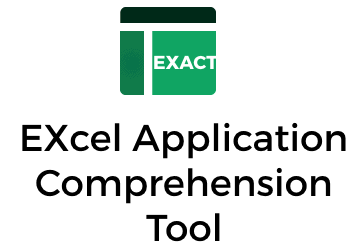EXACT Wiki
Android GUI Ripper Wiki
Visit our new Android Ripper page at https://github.com/reverse-unina/AndroidRipper/wiki
The Android GUI Ripper is able:
- to automatically explore an Android application by exercising its GUI and detecting crashes of the Android application due to unhandled exceptions of its Java source code;
- to generate re-executable JUnit test cases;
- to abstract models of the GUI by reverse engineering, such as the GUI Tree of the explored GUIs, the Event Flow Graph (EFG);
- to measure the obtained degree of coverage of the source code.More details, live demo and executable demo here
TestRia
TestRia is a tool for the automatic regression testing of RIAs.
Input to TestRia are the session traces collected via CreRia. TestRia is able to automatically replay session traces and to automatically evaluate if the same sequence of states is reached both on the original execution both on the replayed execution on a modified version of the application under test. In order to evaluate the state similarity, the same criteria originally proposed for CreRia are applied.
In order to face testing scalability problems, TestRIA provide functions for the reduction of the session traces according to such covering criteria
Creria 4.0
The version 3.4 of CreRIA supports an interative and incremental process for the reverse engineering of RIAs via dynamic analysis.
The tool was developed with Java-based technologies, and its architecture includes five packages named GUI, Extractor, Abstractor, Validator, and DataBaseController respectively, besides a relational database that stores the extracted information and produced abstractions.
MaTeRIA Project
Goals of the MATERIA project:
1) Defining representation models suitable for comprehending and testing existing RIAs.
▫Proposing Reverse Engineering techniques for obtaining these models.
2) Investigating RIA testing techniques.In the MATERIA project different tools are used, such as DynaRIA, CrawlRIA, TestRIA.
There are some slides demonstrating the MATERIA objectives and methodlogies
DynaRIA
Posted by me on January 20, 2010
DynaRIA is a tool for dynamic analysis and testing of RIAs. It is able to execute the test cases produced by the Test Case Generator or the Test Case Reducer tool, to monitor their execution in a browser environment, and to produce a report of detected crashes. It also evaluates and reports coverage measures.
DynaRIA Sequence Viewer Download
DynaRIA Readme (italian)
QMEditor
Posted by me on July 31, 2009
Nowadays, there is a large diffusion of open and dynamic cooperative architectures that are based on services (SOA). In these architectures, problems may be solved by existing services or by composing them.
The Customer of a service is not only interested to its functionality, but also on its quality (i.e. performance, cost, reliability, security and so on). In this scenario, models, techniques and tools supporting the effective selection of the service that provides the better quality are needed.QMEditor supports the process of definition of quality policies for the Customer and for the Provider, too. QMEditor uses Java 1.6.
Creria 3.2
Creria tool provides an integrated user-friendly environment for dynamic analysis of RIAs implemented in AJAX. The tool was developed with Java-based technologies, and its architecture includes five packages named GUI, Extractor, Abstractor, Validator, and DataBaseController respectively, besides a relational database that stores the extracted information and produced abstractions.
WARE
WARE is a tool for reverse engineering web applications. UML diagrams are used to model a set of views that depict several aspects of a web application at different abstraction levels. The recovered diagrams ease the comprehension of the application and support its maintenance and evolution.
WARE has been developed with Microsoft Visual Basic 6.0, Microsoft Visual C++ 6.0, Microsoft Access 97. It has been completed in 2002.
Page Classifier
Reliable classification of Web Application User Interfaces for the aim of extracting specific data for each class of interfaces is a fundamental task in migration, testing and reverse engineering processes involving existing Web Applications. A feasible and reliable classification approach is the one that exploits combinations of Web pages structural features for discriminating the page equivalence class.
The Page Classifier tool supports an iterative process that allows classification rules composed of Web pages structural features to be deduced in dynamically generated web pages.
